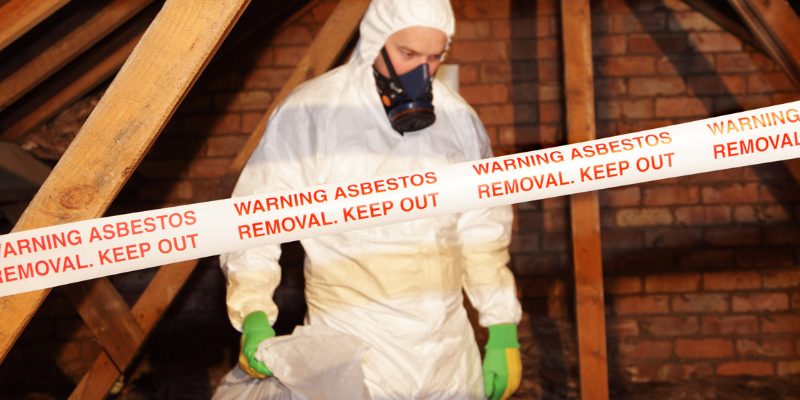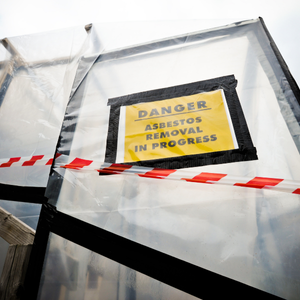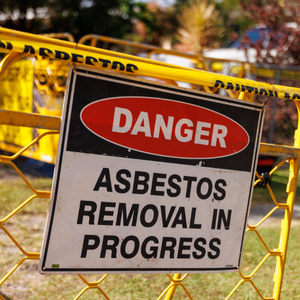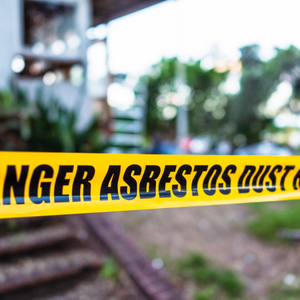
Are you worried your home might have an asbestos problem? Don’t panic just yet. Fair Cash Offers For Homes is here to help. There are clear ways to determine whether asbestos is present and what type it is, both of which impact the overall cost of asbestos removal, a process known as asbestos abatement.
There have been reported cases of asbestos in Fayetteville, North Carolina; it’s not unique to this area. The issue is more common in older homes built before the 1970s, when asbestos-containing materials were widely used in construction. So, if you’ve inherited a home or purchased one that’s changed hands multiple times, it’s wise to have it inspected.
Knowing about an asbestos issue from early on minimizes the risk of exposure to this health hazard. It’s a serious issue that should always be handled by licensed professionals.
What is Asbestos?
If you’re a new homeowner or planning to become one, you might’ve heard of asbestos.
Asbestos is a naturally occurring mineral that was once widely used in construction due to its durability and heat resistance. It was commonly found in insulation, floor tiles, ceiling materials, and more. While it has many practical uses, it’s notorious for its use in older homes.
Over time, asbestos fibers were discovered to be highly dangerous when inhaled. These microscopic fibers can become airborne during renovations or as materials degrade, posing serious health risks. Although the use of asbestos in new construction significantly declined over the years, a complete ban on all types of asbestos in the United States wasn’t enacted until 2024.
Before the 1970s and even some afterward, homes may still contain asbestos. So whether you’re buying an older home or already living in one, it’s important to stay informed and proactive about potential exposure.
Type of Asbestos
There are six types of asbestos, each varying in composition, risk level, and removal difficulty, which can directly impact the overall abatement.
- Chrysotile (White Asbestos): This is the most common type found in homes, and is the least expensive to remove due to its lower friability (tendency to crumble).
- Amosite (Brown Asbestos): Often used in insulation and cement products, it is more hazardous and usually more costly to remove due to its brittle nature.
- Crocidolite (Blue Asbestos): Considered the most dangerous type due to its thin, needle-like fibers that are easily inhaled. Generally, the most expensive and urgent to remove.
- Actinolite: Less common but still dangerous, and can be slightly more complex to remove, making it potentially more expensive.
- Anthophyllite: Rarely used in construction, but can be found in composite flooring or insulation.
- Tremolite: Not used commercially, so you’re probably safe from this type.
How Much Does Asbestos Removal Cost?

Asbestos removal can be expensive, often costing thousands of dollars, depending on the severity of the contamination. On average, homeowners can expect to pay around $2,000 for asbestos abatement, but costs can climb much higher, sometimes reaching five figures, if the contamination is widespread.
More specifically, asbestos removal typically ranges from $5 to $20 per square foot. The total cost depends on several factors, including:
● The type of asbestos present (friable asbestos is more dangerous and costly to remove)
● The extent of the contamination (larger areas = higher costs)
● The location of the asbestos within the home (e.g., attic, walls, flooring)
Additional Asbestos Removal Expenses
In addition to removal costs, homeowners should also account for asbestos disposal fees. Disposal rates can range between $10 to $50 per cubic yard, depending on local regulations and the type of material being removed. These fees cover the safe handling, transportation, and disposal of hazardous waste and can add several hundred dollars to the overall bill.
You should also expect to pay for permit fees, both for the removal and disposal process. These costs vary by city and state but are typically required to ensure the work is done according to safety and environmental standards.
While these expenses can add up, asbestos removal is a necessary investment not only for your health and safety but also to remain compliant with local, state, and federal regulations. Licensed professionals are required to perform asbestos abatement to ensure the work is done safely and legally. Attempting to remove asbestos yourself is not only dangerous, but it can also result in fines or delays in future real estate transactions. Proper abatement ensures your home is safe, legally compliant, and ready for future improvements or resale.
How Long Does Asbestos Removal Take?
While asbestos removal can be costly, the process is often faster than you might expect. For smaller areas like a single room, it typically takes around 5 days on average. Of course, the exact timeline depends on several factors, such as the extent of the contamination, the severity of the problem, and the accessibility of the asbestos within the home. If the entire house is affected, the removal process could stretch over several weeks or even months. In contrast, very minor jobs might be completed in just a day.
The number of professionals on site also plays a role, as more workers can speed up the process, but naturally, that may also increase overall cost.
Asbestos removal involves several critical stages, starting with inspection and testing, followed by preparation of the area, the actual removal of materials, and finally, proper disposal in compliance with safety regulations.
Once removal is complete, the final clearance test is essential to confirm the home is free of asbestos. You wouldn’t want to go through the entire process only to discover that fibers still remain–and have to start all over again.
How Do You Know If Your Home Has Asbestos?
Although it’s nearly impossible for an untrained eye to detect asbestos, there are some general signs that can serve as general warnings. These warning signs include:

● Your home was built around the 1990s
● Visible wear and tear, like abrasions or water damage, on older building materials
● Corrugated paper wrap on old pipes
● Fibrous cement siding with a dimpled or textured surface
● Popcorn or textured ceilings, especially from the 60s-80s
● 9-inch vinyl floor tiles (common in midcentury homes)
● White or gray papery material around ductwork or plumbing
It’s surprisingly difficult to tell if your home contains asbestos just by looking, especially since asbestos has no smell and often hides behind walls, ceilings, or under floors. That’s why many homeowners only discover they have an asbestos issue during renovations.
Asbestos only becomes a serious risk when it’s disturbed, causing the fibers to break apart and become airborne. That’s why it’s often uncovered during renovation work such as replacing pipes, tearing down walls, or moving old flooring. In some cases, contractors can recognize the distinctive, cloth-like fibers floating through the air. But by that point, the situation is already hazardous. These microscopic fibers can be inhaled, stick to clothes and hair, and spread throughout the home. While serious health effects usually come from repeated or prolonged exposure, even short-term contact can pose risks, especially for vulnerable individuals.
How Much Is an Asbestos Test?
When it comes to asbestos, it’s always better to be safe than sorry. So, as a rule of thumb, any home built before the 1990s should be professionally inspected for asbestos, especially if you’re planning renovations or are unsure about the home’s maintenance history.
A professional asbestos test costs between $250 and $800, averaging around $500. This price usually includes the pre-inspection, material sampling, and lab analysis. If you’re a homeowner looking to move on quickly without dealing with these issues, you can choose to sell your home for cash in Fayetteville or nearby cities, making the process faster and less stressful.
However, if you’re testing a larger area or requesting additional services like air quality testing, your total cost could be on the higher end of that range, or even more, depending on the complexity of the job.
While DIY asbestos kits are available online, they are not recommended. Asbestos is a hazardous, carcinogenic material, and handling it without proper safety measures can disturb the fibers, turning a simple test into a dangerous and costly issue. For your safety and peace of mind, asbestos testing should always be left to certified professionals.
Asbestos Abatement: Removal vs Encapsulation

At the first sign of possible asbestos in your home, don’t rush straight to removal. It’s essential to get a professional asbestos test first, not only to confirm the presence of asbestos but also to determine whether removal or encapsulation is the more appropriate solution.
That’s right, not all asbestos situations require full removal. In some cases, asbestos encapsulation may be a safer, more cost-effective option.
Encapsulation is usually recommended when the asbestos-containing material is undisturbed, fully intact, and showing no signs of damage. Instead of removing the material, a special sealant is applied to bind the fibers together, preventing them from becoming airborne. Since asbestos is only dangerous when inhaled, this method can effectively reduce the risk.
Encapsulation usually costs between $2 to $6 per square foot, making it less expensive than full removal, which can range from $5 to $20 per square foot. However, it’s not always a permanent solution, as regular inspections are needed to ensure the seal remains intact and the material does not deteriorate over time. For homeowners looking to avoid these ongoing expenses, another option is to sell your home for cash in Wade or nearby cities, providing a quicker and hassle-free alternative.
If you’re looking for a long-term, worry-free fix, especially if the material is damaged or you’re planning major renovations, a full asbestos removal is often the better investment. Always consult a licensed asbestos professional to determine the best course of action based on your home’s conditions.
Bottom Line: Cost of Asbestos Removal in Fayetteville, North Carolina
Hearing that your home contains asbestos, whether during renovation or a real estate deal, is never good news. But it’s not the end of the road. In many cases, you may be able to save money by encapsulating undisturbed asbestos instead of removing it entirely. However, if you’re opting for full removal, it’s a bigger investment upfront but often the better choice in the long run.
At the bottom line, you can expect to pay at least $3,000 for asbestos testing and removal in a typical home, depending on the size and severity of the issue.
Have a home affected by asbestos?
Fair Cash Offers For Homes will take it off your hands–fast, and for cash.
Get your no-obligation, fair all-cash offer today. Contact us at [number] or fill out the short form below, and we’ll get back to you within 24 hours!
Helpful Fayetteville Blog Articles
● Strategies For Selling A Hoarder’s House In Fayetteville, NC
● Selling A Foreclosure Home In Fayetteville, NC
● Selling Your Fayetteville, NC Home By Owner
● Seller Responsibilities For Closing Costs In Fayetteville, NC
● Inheriting A House With Siblings In Fayetteville, NC
● How Long To Live in a House Before Selling In Fayetteville, NC

